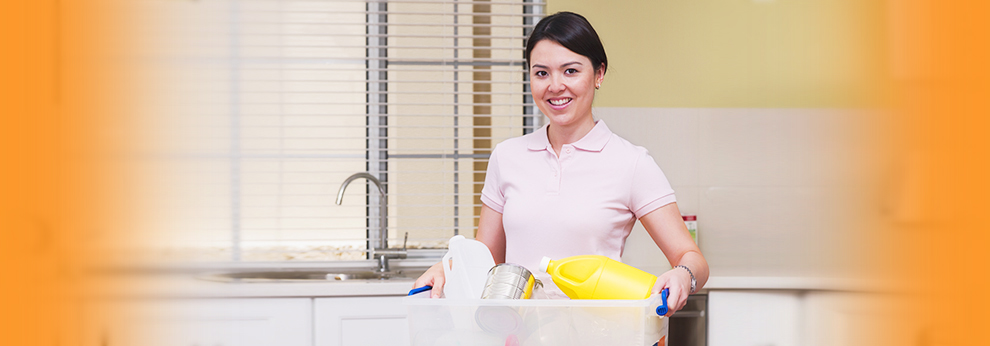Achieve a Lasting Tidy Home: Clutter Control Strategies After a Clear-Out
Posted on 19/08/2025
Achieve a Lasting Tidy Home: Clutter Control Strategies After a Clear-Out
Maintaining a tidy, organized home after a major decluttering session is a dream for many. Yet, the real challenge often begins after the initial clear-out. Clutter has a sneaky way of piling up again, unless you implement effective strategies. Discover in this comprehensive article how to achieve a lasting tidy home with practical, manageable clutter control techniques. Whether you're a minimalist maven or just beginning your journey, these insights will help you keep your spaces beautifully organized for the long run.

Why Does Clutter Return After a Big Clear-Out?
Many people experience the frustration of seeing their homes slowly return to chaos despite their best efforts. The root causes include old habits, lack of systems, and the sheer momentum of daily living. Understanding why clutter reappears is the first step to controlling it for good.
- Accumulation is Natural: Everyday life brings in mail, packages, and purchases that add to your environment.
- Old Habits Die Hard: If you don't change the routines that caused clutter, it will inevitably return.
- Lack of Storage Solutions: Without smart, designated places, items drift and pile up.
- Emotional Attachments: Sentimental value can make letting go a continuous battle.
Key Takeaway: Lasting organization is less about one-time efforts and more about ongoing habits and systems.
Essential Clutter Control Strategies for Long-Term Tidiness
Now that you've completed a major clear-out, it's time to focus on sustaining your progress. Here are proven clutter control strategies that form the foundation of a perpetually tidy home.
1. Establish "A Place for Everything" Policy
A golden rule in the world of organizing is this: Give every item a home. Designating a specific spot for each item prevents clutter from growing. This allows you to easily return things to where they belong and helps the whole household maintain order.
- Assign Spaces: Use baskets, containers, and shelves to organize by category.
- Label Clearly: Labels can prevent confusion, especially in shared areas.
- Audit Regularly: Revisit your assigned spaces monthly to ensure they're being used correctly.
2. Develop Consistent Decluttering Habits
A home doesn't stay organized by accident. Intentional daily and weekly routines are essential for sustaining a tidy space. After the initial purge, schedule recurring "clutter checks" to keep everything in check.
- Daily Five-Minute Reset: Spend five minutes at the end of each day returning stray items to their rightful places.
- Weekly Declutter Day: Set aside 15-30 minutes every week to tackle hotspots like counters and entryways.
- Monthly Deep Dives: Once a month, focus on a single area--like a closet or a drawer--for a deeper sort-out.
3. Mindful Acquisition: Stop Clutter Before It Starts
Controlling what enters your home is as important as managing what's already inside. Practice mindful shopping--ask yourself if a new purchase serves a purpose or fills a gap before bringing it home.
- Adopt a "One In, One Out" Policy: Whenever you buy something new, let go of a similar item.
- Avoid Impulse Buys: Make shopping lists and stick to them. Wait 24 hours before buying non-essentials.
- Embrace Minimalism: Choose quality over quantity for items that you truly need and love.
4. Optimize Storage Solutions for Every Space
Even after decluttering, inefficient storage can lead to renewed mess. Tailor your storage strategies to fit the unique demands of each room.
- Maximize Vertical Space: Use shelves, pegboards, and hooks to utilize wall areas.
- Use Clear Containers: Transparent bins let you see what's inside, preventing duplicate purchases.
- Invest in Multipurpose Furniture: Ottomans, beds, and benches with storage help hide necessary items out of sight.
5. Create Daily Entry and Exit Routines
The entryway is the front line of clutter. Shoes, keys, bags, and mail accumulate in this high-traffic zone. Establishing streamlined entry and exit routines will dramatically reduce chaos.
- Designate Drop Zones: Place baskets or trays near the door for essentials.
- Mail Sorting Station: Process mail immediately and avoid piles of unopened paper.
- Shoe Storage: Use racks or baskets to collect footwear neatly.
Room-by-Room Tidy Home Strategies
Applying targeted strategies to each part of your home creates a harmonious and sustainable order. Here's how to keep every room consistently tidy after a big clear-out.
Living Room Clutter Control
- Limit Accessories: Display a select few meaningful items instead of crowding surfaces.
- Remote Controls & Gadgets: Store in decorative boxes or concealed organizers.
- Daily Reset: Spend a few minutes each night straightening pillows and picking up stray items.
Kitchen Organization and Maintenance
- Practice FIFO (First In, First Out): Organize pantry and fridge items by expiration date to reduce waste.
- Counter Zero Policy: Keep counters as clear as possible, only leaving out what's used daily.
- Declutter "Junk Drawer" Monthly: Many kitchens have a catch-all drawer--clean it regularly.
Bedroom: A Clutter-Free Sanctuary
- Nightstand Simplification: Limit bedside table items to a lamp, book, and water.
- Under-Bed Storage: Use shallow bins for seasonal clothes or linen.
- Clothing Purge Routine: At each season change, review wardrobe and donate unused items.
Bathroom: Streamlined Storage
- Clear Expired Products: Routinely go through medicines, toiletries, and beauty products.
- Shower Caddies: Use organizers to corral bottles and reduce clutter.
- Towel Hooks vs. Bars: Hooks can encourage quicker, tidier storage.
Home Office or Workspace Management
- Papers Go Digital: Scan and shred unnecessary paper.
- Desk Drawer Dividers: Keep pens, gadgets, and supplies organized and accessible.
- File Regularly: Don't let documents pile up--set a weekly reminder to file or shred.
Overcoming Common Clutter Control Challenges
Family and Shared Spaces
Living with family or roommates brings unique clutter challenges. Establish house rules and shared systems for tidiness.
- Assign Responsibilities: Create chore charts so everyone knows their role in maintaining order.
- Easy Clean-Up for Kids: Use labeled bins and teach children how to put toys away.
- Communicate Regularly: Hold "tidy-up meetings" to troubleshoot any issues together.
Sentimental Clutter Solutions
*Parting with memories can be tough.* Instead of letting sentimental clutter overrun your home, create meaningful boundaries.
- Curate Collections: Display only a few treasured photos or souvenirs; store the rest in a memory box.
- Limit Containers: Assign one box or bin per family member for keepsakes.
- Digitize Memories: Take photos of special items to preserve their memory without keeping them all.
The Importance of Mindset in Maintaining a Tidy Home
Creating a *clutter-free home* is as much about psychology as it is about organization. Developing a mindset that values space, order, and simplicity is essential for long-term success.
- Praise Progress: Celebrate small victories to keep motivation high.
- Be Patient and Flexible: Accept that perfection is unrealistic and adapt as needed.
- Stay Inspired: Follow organizing accounts or read books to infuse new ideas.
Maintenance Methods for a Lasting Tidy Home
Daily Habits That Matter
- Make Your Bed Every Morning: Sets the tone for orderliness.
- Deal With Mess As It Happens: Don't postpone--clean and return items right away.
- Nightly Sweep: Do a quick walkthrough before bed, picking up stray items.
Weekly and Monthly Rituals
- Touch Everything Once: When sorting mail or laundry, deal with it completely instead of moving piles.
- Monthly Room Focus: Allocate each month to deep clean a specific space, preventing buildup.
- Declutter During Events: Use birthdays, holidays, or back-to-school as reminders to edit belongings.
Benefits of a Clutter-Free, Tidy Home
The rewards of maintaining clutter control go beyond a visually pleasing environment. Here are some transformative benefits:
- Reduced Stress: Physical order supports mental clarity and relaxation.
- Time Savings: Less time spent searching for things means more time for what matters.
- Increased Productivity: A tidy workspace boosts focus and achievement.
- Improved Safety: Fewer trip hazards and easier cleaning routines.
- Positive Impact on Relationships: Shared spaces cause less friction and more enjoyment.

Conclusion: Achieve and Sustain Your Tidy Home
FAQs: Lasting Clutter Control and Organization
- How often should I declutter after a major clear-out?
Set a schedule for weekly quick resets and monthly deep declutters to prevent buildup. - What is the easiest clutter control habit to start with?
The daily five-minute pickup is an effective and simple way to maintain tidiness. - How do I make organizing easy for the whole family?
Use labels, storage bins, and shared routines so everyone can participate. - Can I have a clutter-free home without being a minimalist?
Absolutely! The key is creating homes for your items and controlling what comes in.
Ready to enjoy your perpetually tidy home? Remember, keeping your home welcoming and clutter-free requires intentional systems and habits, not perfection. Try these strategies and enjoy the calm and clarity that last well beyond your initial clear-out!





